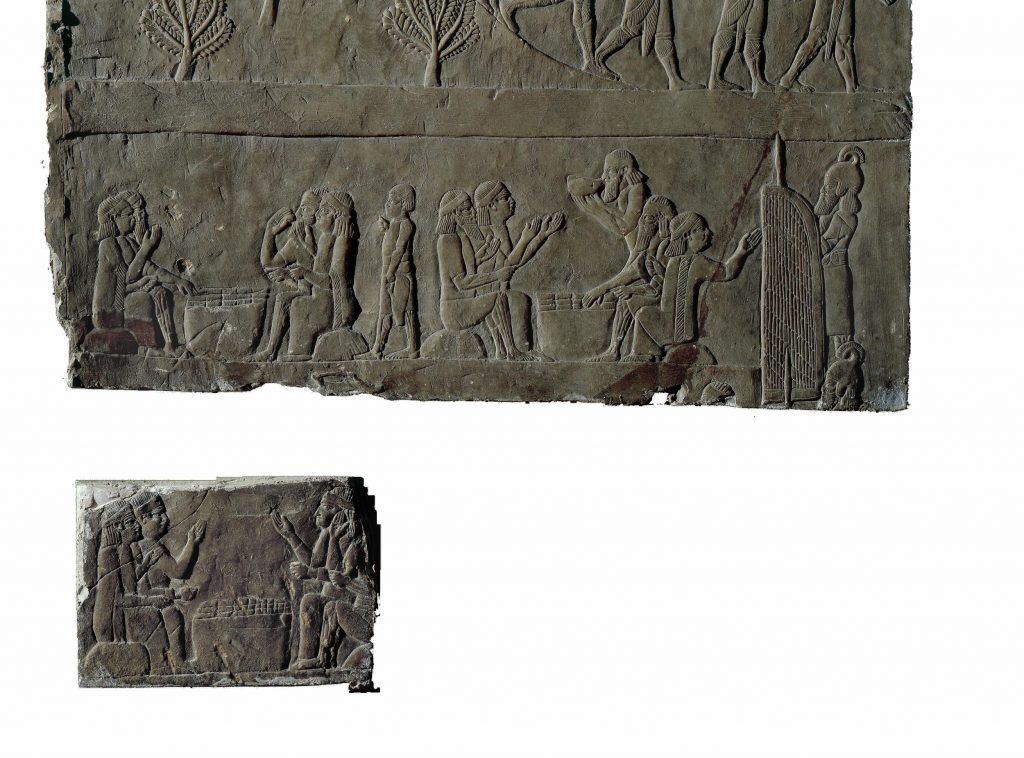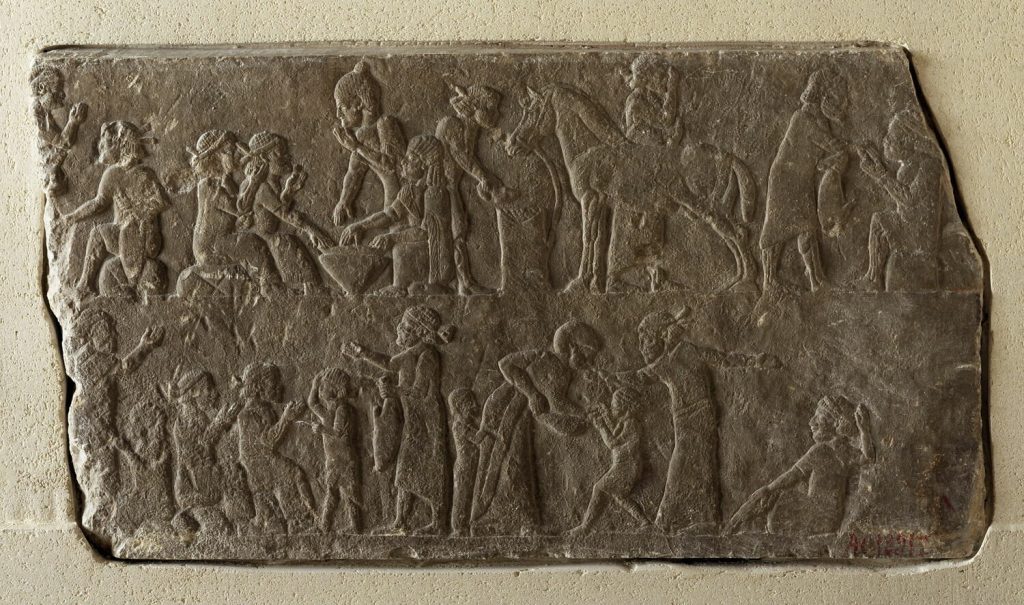

 | Object type: Wall relief |
| Museum: British Museum 124919 (above); Musée du Louvre AO 19913 | |
| Findspot: Excavated/Findspot: Room S1; North Palace, Nineveh (north of Iraq) | |
| Culture, period: Neo-Assyrian | |
| Production date: 7th century BCE | |
| Material: Gypsum | |
 | Dimension: Height 168 cm; Length 172,72 cm; Width 68,58 cm; Depth 15,24 cm (panel above) Height 41 cm; Length 78 cm; Width 11 cm |
 | Nonverbal Communication: Drinking, Eating, Eye contact, Raising of the hand, Raising of the hands |
Description:
The scenes display Elamite prisoners eating their meals inside an Assyrian camp. This is one of the rarest visual examples from ancient Mesopotamia where banqueters are shown in the act of eating and not only of drinking. In this research, it is suggested to understand the omission of images showing people eating at the table with what was considered to be repugnant to see. By contrast, the representation of people drinking was considered a very elegant act to admire. Accordingly, the scene showing the Elamite prisoners eating must have been perceived as a humiliating act by any viewer.
The image vividly represents and conveys the sensation of being at the dining table: a number of people are sitting together, and each is doing what he or she considers necessary; banqueters fall greedily on the food; someone seems to have set down a piece that one had in one’s mouth back into the communal dish; without a towel one’s hands are wiped on one’s coat, one offers another a glass or a half-eaten piece of meat with dirty hands and uses them to touch one’s ears, nose, or eyes; half of the food falls off the table and hands as it travelled from hands to mouth, and from hands to hands. The sensorial experience must have been distasteful as well, since the odours of food and of people eating must have emerged during the course of the banquet. Many aspects cannot be readily surmised from this scene, but the chaotic atmosphere that emanates from the banqueters’ movement and crowding allows viewers to perceive the very essence of eating together, taking meat from the same dish, wine from the same goblet, and standing close to each other. In other words, the reliefs that show the Elamite prisoners consuming their repast showcases what Norbert Elias calls the “invisible wall of affects”, namely the wall which repels and separates one human body and another, something that has been in contact with the mouth or hands of someone else and that appears embarrassed at the mere sight of bodily functions of others or even at their mere mention. The scene itself, in short, is not aesthetically pleasing.
It is also interesting to observe that banqueters sometimes raise their hands. This research suggests that the raising of one hand may indicate a gesture of greeting or, perhaps, may hint at a general interaction between individuals; instead, the raising of two hands may recall the gesture of prayer, to be understood in a perspective of request addressed to a companion to receive food or drink.
Bibliographic references:
Barnett R. D. 1976: Sculptures from the North Palace of Ashurbanipal at Nineveh (668-627 B.C.). London: The Trustees of the British Museum, 58, 60.
Portuese L. / Scalisi P. M. 2021: GALATEO. A New Project Paving the Way for the Study of Manners and Etiquette in the Ancient Near East. Oriens Antiquus Series Nova III: 129-144.
©Image credits: © The Trustees of the British Museum; © RMN, Musée du Louvre
